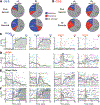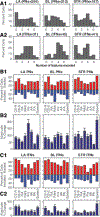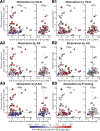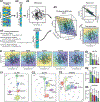Multi-dimensional Coding by Basolateral Amygdala Neurons
- PMID: 30146300
- PMCID: PMC6342465
- DOI: 10.1016/j.neuron.2018.07.036
Multi-dimensional Coding by Basolateral Amygdala Neurons
Abstract
Conditioned appetitive and aversive responses (CRs) are thought to result from the activation of specific subsets of valence-coding basolateral amygdala (BLA) neurons. Under this model, the responses of BLA cells to conditioned stimuli (CSs) and the activity that drives CRs are closely related. We tested the strength of this correlation using a task where rats could emit different CRs in response to the same CSs. At odds with this model, the CS responses and CR-related activity of individual BLA cells were separable. Moreover, while the incidence of valence-coding cells did not exceed chance, at the population level there was similarity between valence coding for CSs and CRs. In fact, both lateral and basolateral neurons concurrently encoded multiple task features and behaviors. Thus, conditioned emotional behaviors may not depend on the recruitment of single cells that explicitly encode individual task variables but from multiplexed representations distributed across the BLA.
Keywords: amygdala; conditioning; population coding; punishment; reward; valence.
Copyright © 2018 Elsevier Inc. All rights reserved.
Conflict of interest statement
Competing financial interests statement
The authors declare that they have no competing financial interests.
Figures








References
-
- Barthó P, Hirase H, Monconduit L, Zugaro M, Harris KD, and Buzsáki G (2004). Characterization of neocortical principal cells and interneurons by network interactions and extracellular features. J. Neurophysiol 92, 600–8. - PubMed
Publication types
MeSH terms
Grants and funding
LinkOut - more resources
Full Text Sources
Other Literature Sources

